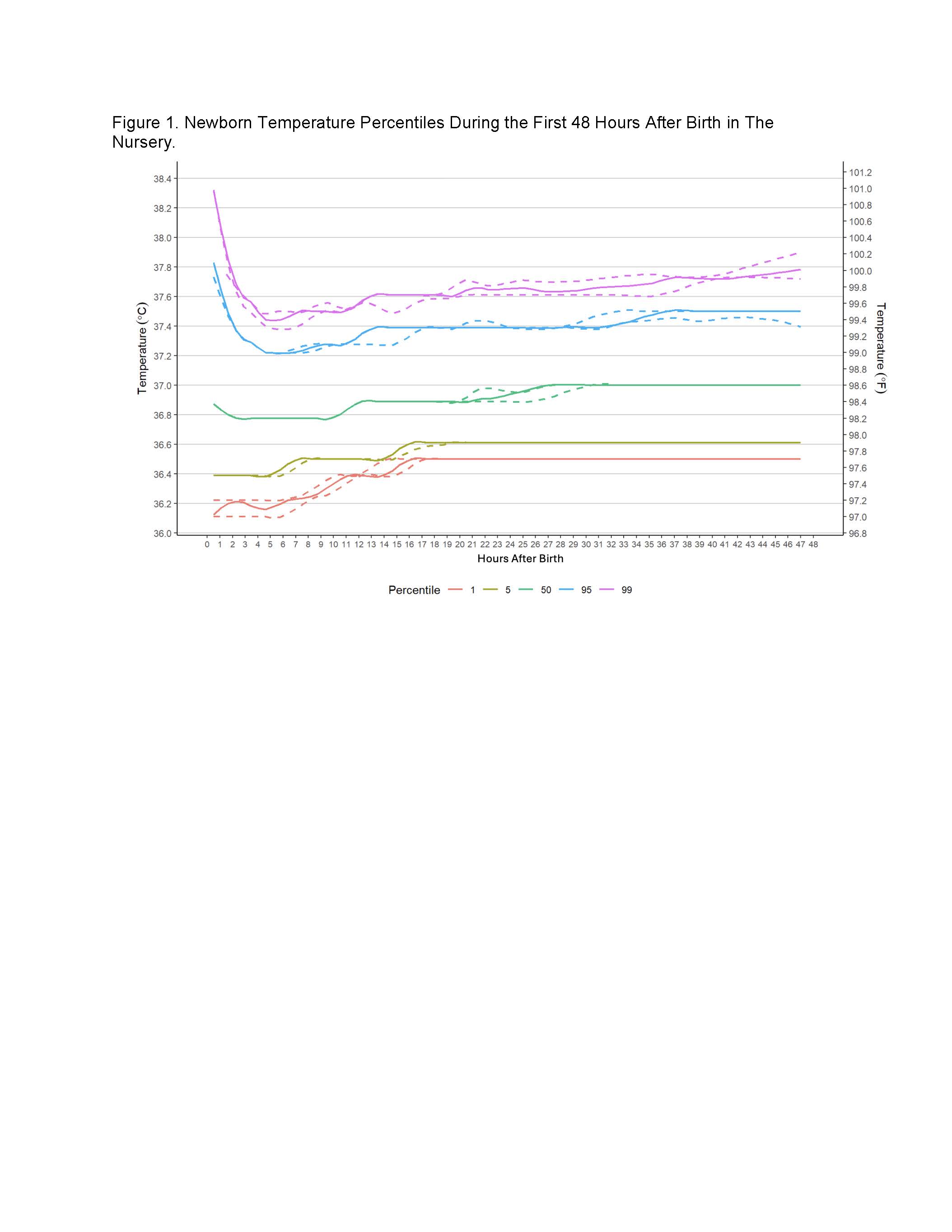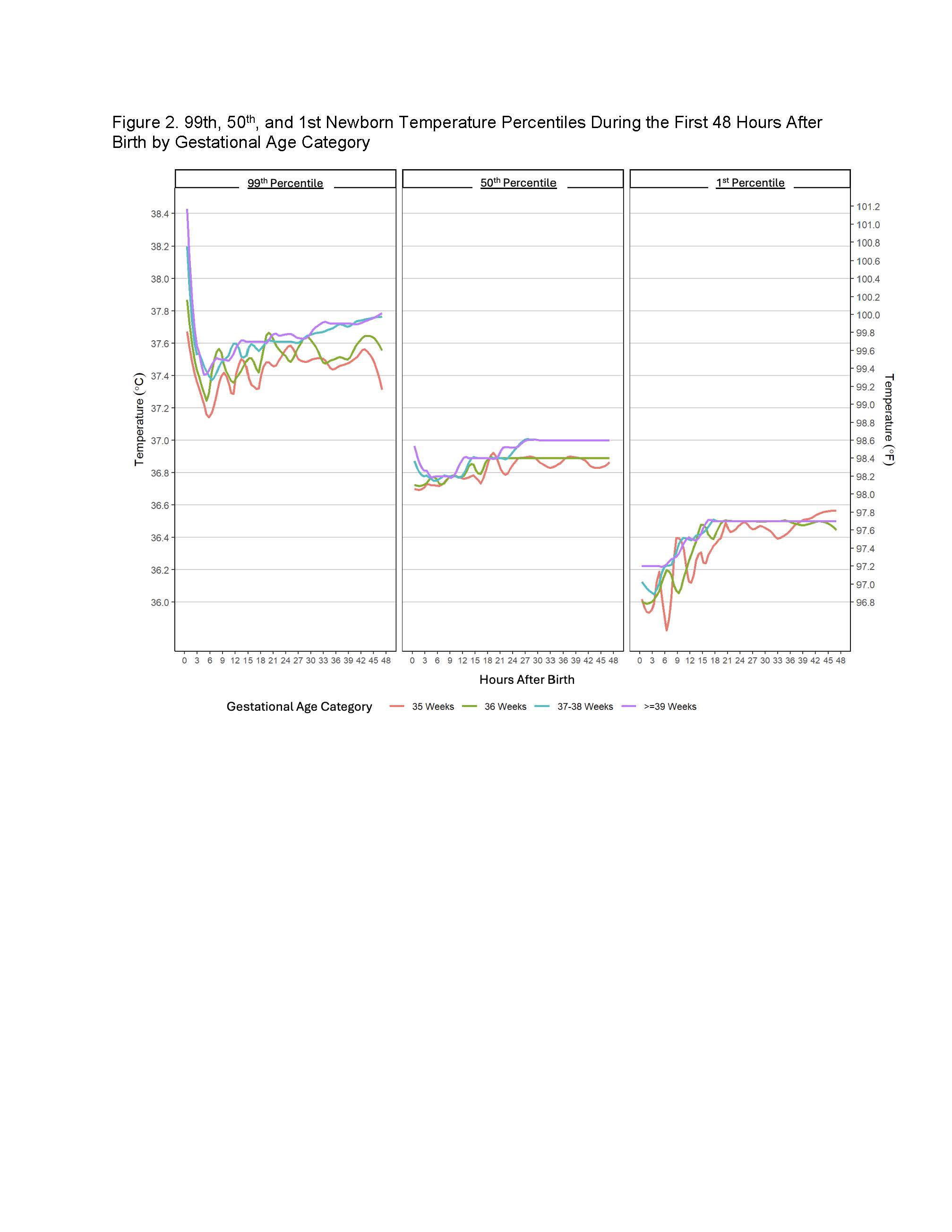Newborn Care 2
Session: Newborn Care 2
264 - Newborn Temperature Percentiles by Hour of Life in the Newborn Nursery
Sunday, April 27, 2025
8:30am - 10:45am HST
Publication Number: 264.5842
Rebecca Dang, Lucile Packard Children's Hospital Stanford, Palo Alto, CA, United States; Adam Frymoyer, Stanford University School of Medicine, Palo Alto, CA, United States; Anisha Patel, Stanford University School of Medicine, palo alto, CA, United States; Yingjie Weng, Stanford University School Of Medicine - - Stanford, CA, Palo Alto, CA, United States; Alan Schroeder, Stanford university school of medicine, Palo Alto, CA, United States

Rebecca Dang, MD/MSEpi (she/her/hers)
Instructor
Lucile Packard Children's Hospital Stanford
Lucile Packard Children's Hospital At Stanford
Palo Alto, California, United States
Presenting Author(s)
Background: Thermoregulation is a central focus of newborn care and standard practice includes numerous temperature measurements over the nursery hospitalization. However, normal temperature distributions and patterns in the first days after birth have not been well described. As current definitions of hypothermia ( < 36.5˚C/97.7˚F per the WHO) may trigger diagnostic and therapeutic interventions due to concerns for conditions such as early-onset sepsis, updating temperature norms will be important to drive evidence-based newborn care.
Objective: To characterize normal temperature percentiles of newborns by patient factors during the first 48 hours after birth.
Design/Methods: Cross-sectional study using electronic health record data on infants ≥35 weeks’ gestation admitted to a children’s hospital newborn nursery from 2015-2021. The 1st, 5th, 50th, 95th, and 99th temperature percentiles were characterized for 48 hours after birth by aggregating longitudinal temperature data into a time series. Point estimates and confidence intervals per temperature percentile were calculated within each time bin (1-hour intervals before 24 hours, then 2-hour intervals). We conducted stratified subanalyses by sex, gestational age, birth weight, mode of delivery, and presence of peripartum maternal fever.
Results: Our final cohort included 23,366 infants with 231,371 temperature values. At birth, a wide spread of temperatures was seen with a 2.3˚C spread from the 1st percentile to the 99th percentile. The spread of temperatures narrowed over time by ~16 hours after birth (Figure 1). The 1st percentile remained lower than the WHO threshold for neonatal hypothermia ( < 36.5˚C) through 14 hours following birth, and the 5th percentile remained < 36.5˚C through 5 hours. Subanalyses revealed no differences in temperature values between male and female infants. While not statistically significant, the temperature percentiles visually increased with increasing gestational age and birth weight categories (Figures 2 and 3). Infants born via vaginal delivery and who were exposed to peripartum maternal fever had higher temperatures immediately following birth, but their temperature curves converged soon after.
Conclusion(s): Temperature values in newborns are spread widely at birth but begin to stabilize by ~16 hours after birth. Additionally, temperature values may increase with increasing gestational age and birth weight. While these findings may reflect temperature practices at our institution, this study serves as a first step toward informing high-value newborn care by providing updated newborn temperature norms by various patient factors.
Newborn Temperature Percentiles During the First 48 Hours After Birth in The Nursery.

99th, 50th, and 1st Newborn Temperature Percentiles During the First 48 Hours After Birth by Gestational Age Category

Figure 3. 99th, 50th, and 1st Newborn Temperature Percentiles During the First 48 Hours After Birth by Birth Weight Category
.jpg)

